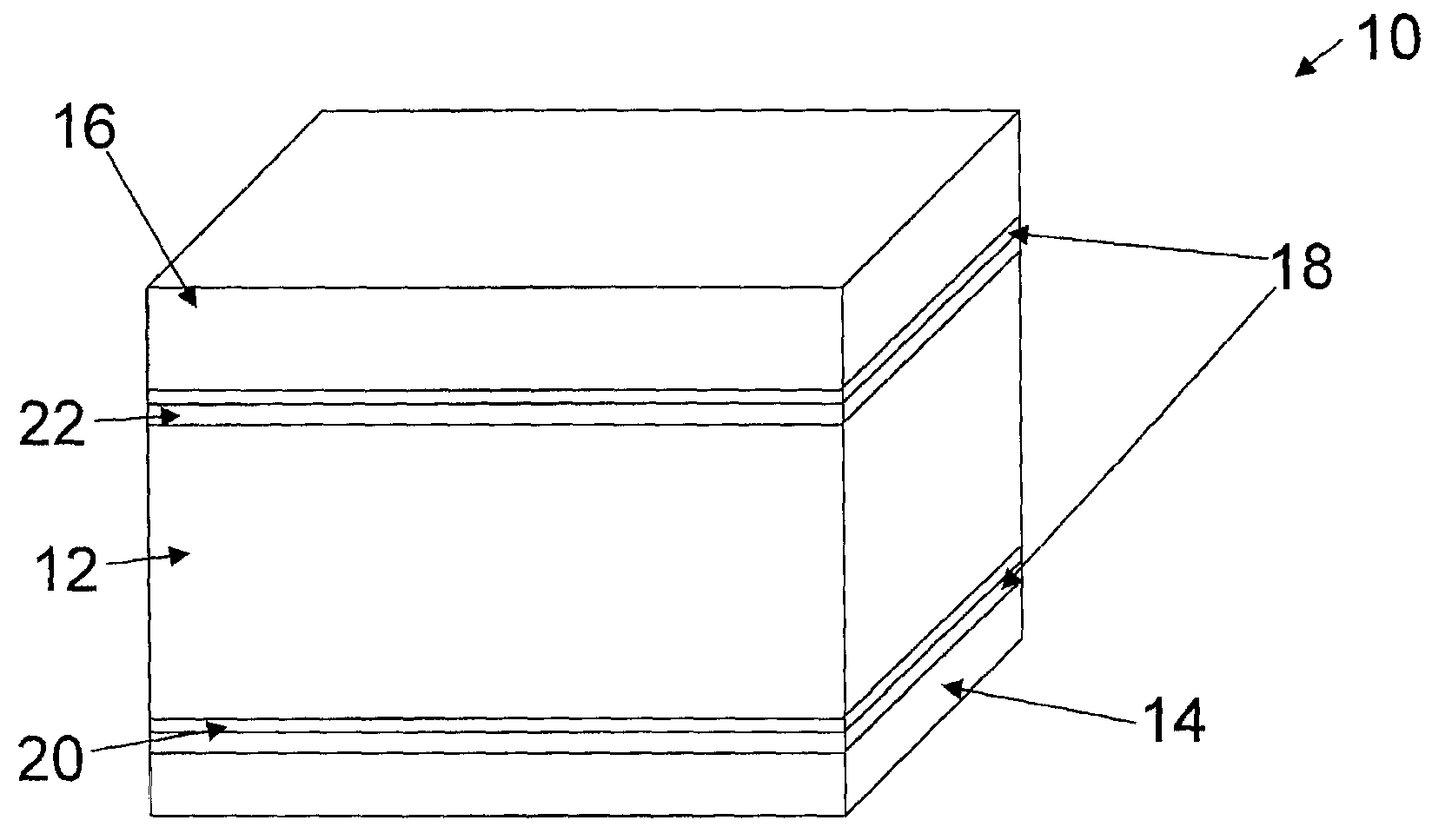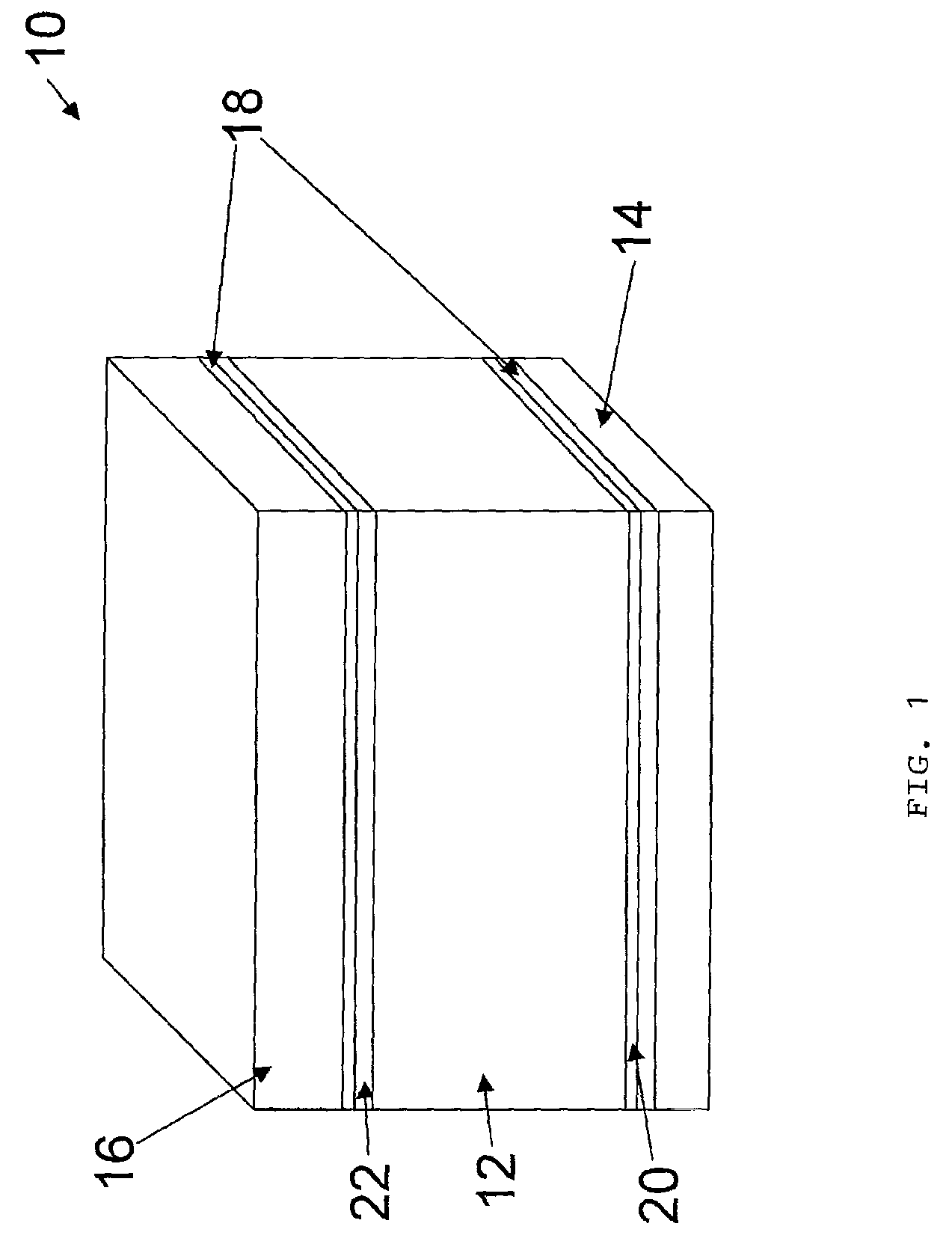Carbon foam structural insulated panel
a technology of structural insulation and carbon foam, applied in the direction of thin material processing, layered products, transportation and packaging, etc., can solve the problems of poor thermal insulation and resistance of structures, slow and labor-intensive approach, and lack of adequate thermal insulation properties, etc., to achieve high strength-to-density ratio, high resistance to combustion or charring, and easy machine
- Summary
- Abstract
- Description
- Claims
- Application Information
AI Technical Summary
Benefits of technology
Problems solved by technology
Method used
Image
Examples
Embodiment Construction
[0033]The carbon foam used as the core for the inventive panel exhibits a density, compressive strength and compressive strength to density ratio to provide a combination of strength and relatively light weight characteristics not heretofore seen. In addition, the monolithic nature and bimodal cell structure of the foam, with a combination of larger and smaller pores, which are relatively spherical, provide a carbon foam which can be produced in a desired size and configuration and which can be readily machined.
[0034]The carbon foam should have a relatively uniform distribution of pores in order to provide the required high compressive strength. In addition, the pores should be relatively isotropic, by which is meant that the pores are relatively spherical, meaning that the pores have, on average, an aspect ratio of between about 1.0 (which represents a perfect spherical geometry) and about 1.5. The aspect ratio is determined by dividing the longer dimension of any pore with its sho...
PUM
| Property | Measurement | Unit |
|---|---|---|
| liquid permeability | aaaaa | aaaaa |
| compressive strength | aaaaa | aaaaa |
| diameter | aaaaa | aaaaa |
Abstract
Description
Claims
Application Information
 Login to View More
Login to View More - R&D
- Intellectual Property
- Life Sciences
- Materials
- Tech Scout
- Unparalleled Data Quality
- Higher Quality Content
- 60% Fewer Hallucinations
Browse by: Latest US Patents, China's latest patents, Technical Efficacy Thesaurus, Application Domain, Technology Topic, Popular Technical Reports.
© 2025 PatSnap. All rights reserved.Legal|Privacy policy|Modern Slavery Act Transparency Statement|Sitemap|About US| Contact US: help@patsnap.com


